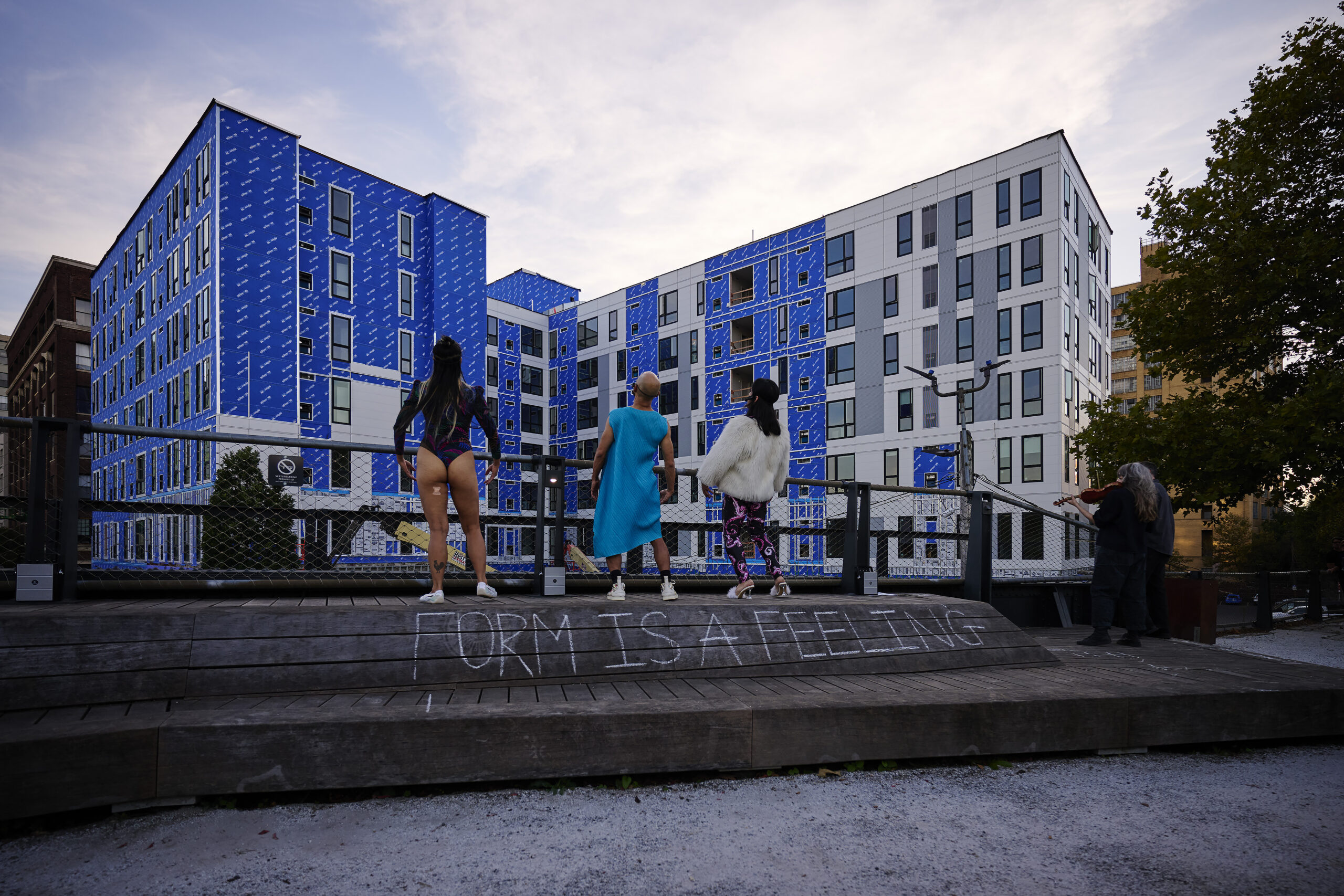HOW DOES WORK IN AN AFRICANIST AESTHETIC ASK DIFFERENT KINDS OF QUESTIONS ABOUT THE RELATIONSHIP OF AUDIENCE AND PERFORMER? What pushes buttons? What gets triggered? How is the work different for different audiences? What happens if we don’t get it?
BLACK IS NOT A FIXED IDENTITY, NOT A SINGLE THING, IT’S A CHANGEABLE THING. Stories about black people are crucial, black Americans have something to tell the world, African American creativity has been the engine for popular culture around the world.
HOW DOES THE AUDIENCE GET COMPOSED AND WHO SEES THE WORK? Is it a different audience for Rennie Harris Puremovement than for Bill T. Jones? Where is the work happening? Who is the audience the work is being made for?
WHAT ARE THE STANDARDS OF FINE FORM IN AFRICANIST FORMS? Percussive attack, complex rhythm, apart playing, not a commitment or interest in unison. Better to reveal oneself within the dance. Remaining cool. Dances teasing something, being intertextual, having humor. Tracking African American dance alongside developments in Western dance, the defining elements are often already present in African American dance.
BLACK CULTURE HAS LESS INDIVIDUATING IMPULSE. Being connected runs through this cultural formation. Assumptions that ground the performance have to do with connectivity.
AT SOME POINT COUNTING OURSELVES AS OUTSIDERS STOPS BEING USEFUL.
HOW TO WRITE TODAY? Write about what happened, how it answered what it asked, and how it made something happen in the room. Understand the way the work is received. Represent it to people who couldn’t be there. Here’s what it feels like see/be in the presence of this work. Where did the performance really emerge? What was enabled by that performance?
LETTING GO OF CENTRALIZING ‘AUTHORITY’ IN CRITIC. Your spending 5-6 hours writing won’t fix what’s happening in a 9 minutes performance. As writers we have histories and are accounting for ourselves as we write. It’s crucial we keep in motion, rubbing up against stuff.
DO WE NEED TO ANSWER A PROMOTER’S SENSIBILITY AS THEY TRY TO TILT US TOWARD A PARTICULAR WAY OF SEEING THE WORK? Artist trying to frame their work in a particular way; distinction between marketing and program notes – what makes a good idea vs. what makes a good dance? Glorifying work based on promotion rather than actuality. In the program notes, in the press release, that’s not “in the room.”
MAKING SPACE TO BE RECEPTIVE TO THE WORK. PUTTING ASIDE BAGGAGE.
PRIVILEGE AND ACCESS. “I never had to think about my identity” — black people never have that option. Recognizing self as black – moment of trauma or hurt. What does that do to authority and power in writing?
HOW WORK OF ARTISTS OF COLOR BECOMES AN ACCESS POINT TO PEOPLE OF COLOR in place of a conversation. Letting us feel connected to something we feel the people in the work represent. In RHPM the women in the performance are seen as representatives for women of color and women in hip hop. Work as a window to something else.
SEXUALITY IN PERFORMANCE AND AESTHETICS. Why are there so many ‘out’ black artists?
IN WHAT YOU GIVE SPACE TO, THE HARDER ROAD IS THE BETTER ROAD. If you think something is problematic, it probably is.
WE DON’T HAVE “UNIVERSAL” ANY MORE. Digital natives don’t imagine that’s even necessary. Question of universalism is a bit of a remnant. We really need specialized writing that helps us navigate all these things that are available to us.
LET THE “NOT KNOWING” TURN INTO SOME JUICY QUESTIONS.





